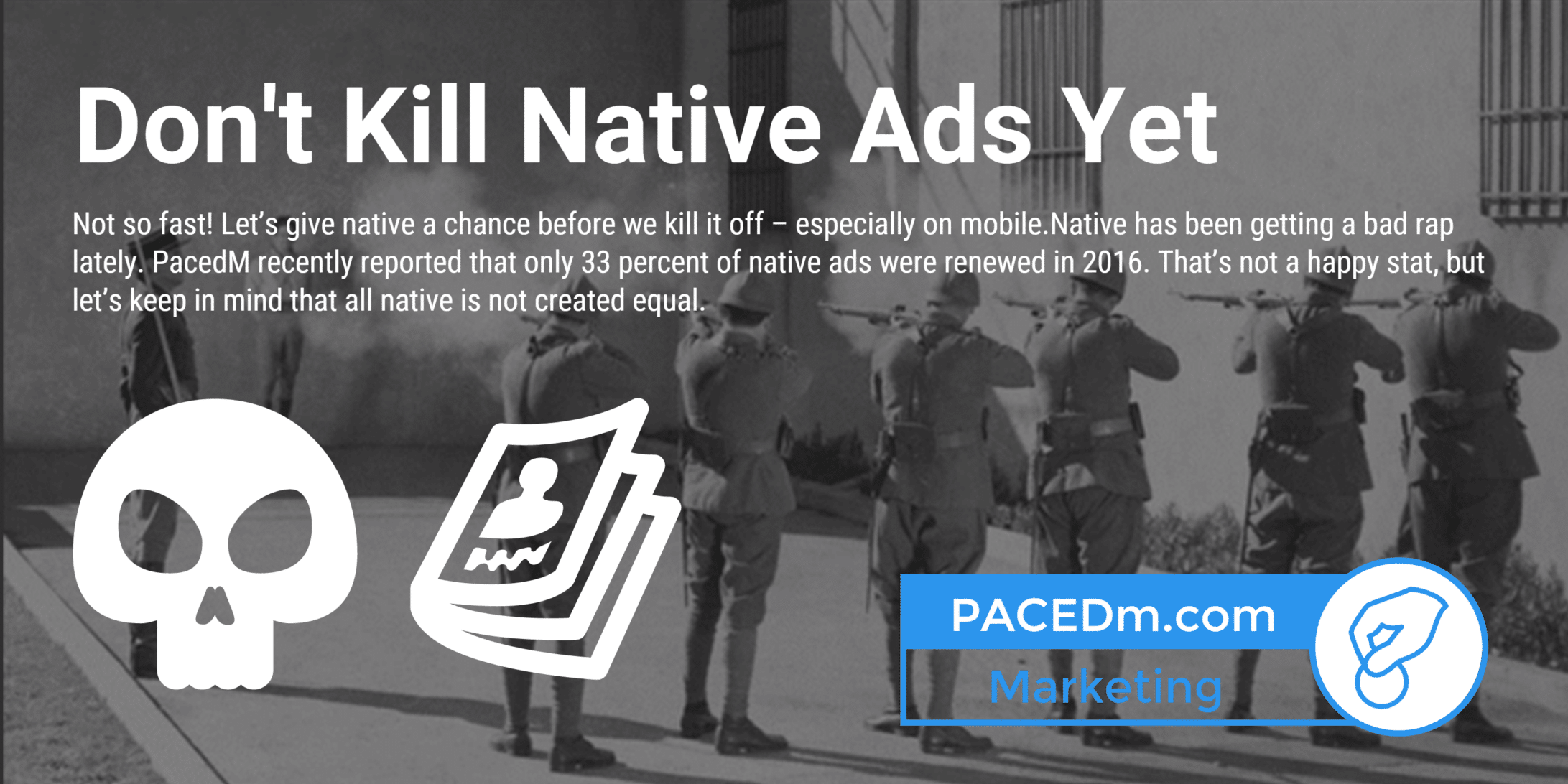Native has been getting a bad rap lately. PacedM recently reported that only 33 percent of native ads were renewed in 2016. That’s not a happy stat, but let’s keep in mind that all native is not created equal. Google AdWords, considered by many to be the quintessential native advertisement, seems to be doing just fine, as do Facebook’s in-feed units. And mobile native – which we’ll address shortly – is definitely on the upswing.
With respect to “traditional” native, there are many different flavors, and some are more effective – and more appealing – than others. As the IAB defines them, the native formats are:
- In-feed units
- Paid search units
- Recommendation widgets
- Promoted listings
- IAB standard ads with “native” element units
- Custom
I suspect in-feed and paid search units have probably been renewed at a reasonable rate, if I’m looking at the numbers for Google, Facebook and Twitter. Promoting listings, particularly in retail and travel don’t seem to face any challenges either, if I’m looking (for example) at HookLogic’s recent acquisition by Criteo.
I suspect it’s the pesky recommendation widgets whose numbers are tanking right now. While I won’t mention any names, many providers of these services encourage linkbait-like headlines and unflattering celebrity photos to promote marketing materials poorly masquerading as editorial. If a user is foolish enough to click through, they’re often taken to low-quality sites filled with lower-quality ad placements. In the era of “fake news,” it’s a bad place to be. Moreover, the respectable publishers and advertisers who’ve tested these services out over the last year have probably suffered from high spends, low-quality traffic, and a ding to their brand credibility.
I wouldn’t have renewed either.
Mobile Native is Actually Growing
That said, there’s a lot that is working well in native. Beyond everything that’s NOT a recommendation widget, mobile native is really taking off this year. In fact, Business Insider has estimated that “native ads will account for 63 percent of mobile display ad revenue by 2020, up from 52 percent in 2015.”
Well, mobile native is pretty similar to its IAB siblings, but per the Mobile Marketing Association’s definition, there are subtly different flavors: Mobile native ads “are complementary to the core six IAB native ad formats …Because mobile has unique device capabilities, the MMA native ad formats are designed specifically for the mobile marketing channel. They are in-feed social, in-feed content, in-feed commerce, in-map, in-game, paid search, recommendation widgets and custom.” (We’d argue that there’s a pretty broad spectrum of “in-game,” but that’s another article for another day.)
So don’t shy away from native. For both mobile and traditional digital advertising, there are so many good reasons to keep it in mind. Here are three really powerful ones, just for starters:
- No creative assets needed, in most cases. For most of the formats cited above, all you need is a product image (if relevant) and some powerful copy or compelling offer promoting what you do, sell or make. (For audio and video ads, obviously some production will be required.)
- Native ads perform really, really well. According to MarketingLand, a recent IHS study found that engagement rates are 20 to 60 percent higher on native ads than on banners – plus they drive retention rates that are 3X higher. (Our own findings are similar.)
- Users just like them better. While some mobile formats can be interruptive, blocking text or disrupting video, native ads work with content instead of against it. Stats show that native ads are shared by consumers 20-60 percent more frequently than typical display ads. In fact there are predictions that native advertising’s projected growth will be due, in part, to the rise of ad blockers. While native isn’t a solution to ad blocking, it’s a good work-around – and a start on the path to user-first advertising.
In sum, don’t throw out the baby with the bathwater. While some native formats may be less effective and less brand-safe than others, the majority of native advertising is well worth consideration. Why not test it out for yourself in 2017?




